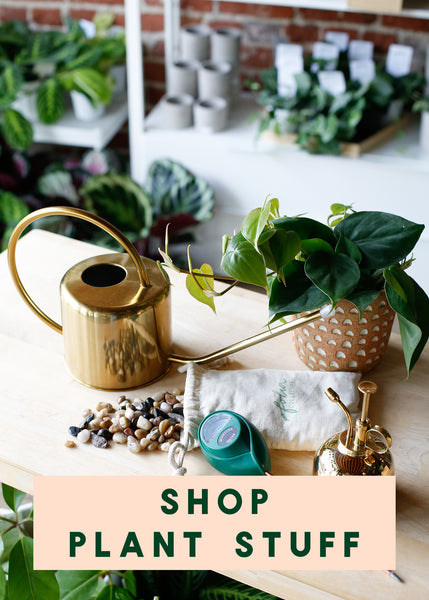Plant Know-How: Philodendron erubescens 'Pink Princess'

A plant that has certainly earned it's name, Philodendron 'Pink Princess' has reigned as one of the plants that tops many plant lovers wishlists for many years. We've been delighted to see them finally become available at a reasonable price point so more people can enjoy this variegated Philodendron! A cultivar of P. erubescens, 'Pink Princess' is a self-heading Philodendron that can display a wide array of variegation in their leaves- from dark greens, to deep burgundy, and pinks ranging from very pale to almost neon-like. Over time, the plant will grow taller and develop larger, wider leaves- this beautiful, more mature plant below was grown by our customer Trinity of Cube House Jungle.

HOW TO CARE FOR PHILODENDRON 'PINK PRINCESS':
Light Requirements for Philodendron 'Pink Princess': this plant needs bright indirect light to maintain strong variegation/color. It can even take an hour or two of direct sun- as long as it's in the morning, or late afternoon. Avoid full sun with this plant.
Water Tips for Philodendron 'Pink Princess': Allow the top 1/3 of the soil to go dry before watering. If you need some help knowing when to water your plant a moisture meter is a helpful tool that can take out some of the guesswork!
The Best Soil for Philodendron 'Pink Princess': Your plant will grow best in a chunky, well draining soil mix. Our Folia Favorite Potting Mix is a great choice!
Is Philodendron 'Pink Princess' Pet Safe? Philodendron 'Pink Princess' is not pet safe and can be toxic when consumed by pets. If you're looking for pet-safe plants, check out the Pet Safe category of the Plant Care Compendium!
Did you know? Philodendron 'Pink Princess' can develop all pink, or all green leaves over time, neither of which are great for the plant. Solid pink leaves don't contain enough chlorophyll for the leaves (or the plant if too many leaves are solid pink) to survive long-term. Solid green leaves mean the plant is reverting back to its P. erubescens parentage. In order to maintain good variegation, if solid pink or green leaves form, simply prune the plant back to the last leaf with nice variegation. Be sure to cut under a node (small bumps that form along the stem) or just under the leaf. This is where new growth will emerge, so that the plant can continue to branch out and form new leaves. As with all pruning- be sure to use a sterilized, sharp blade, taking care not to crush the stem.





